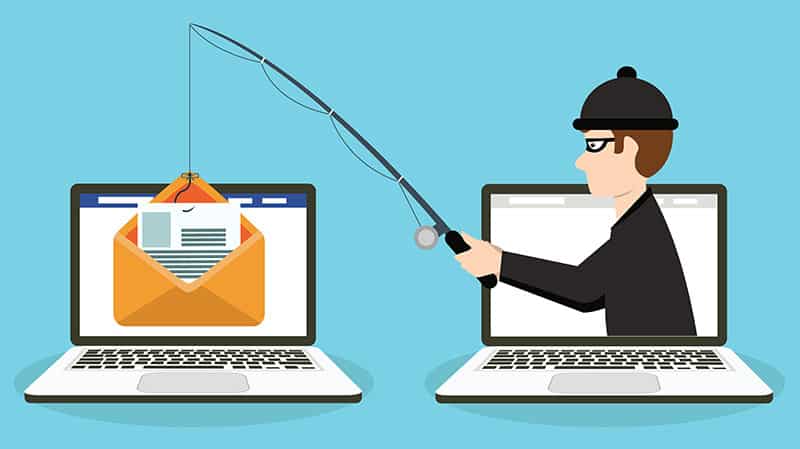All it takes is a single email for hackers to gain access and steal company data.
Whenever an email lands in your inbox, there’s a chance it’s a phishing scam. This is because email phishing scams are extremely common. In fact, studies suggest that phishing scams cause 90% of all company data breaches. So how do you ensure your company doesn’t fall prey to these cyber “phishermen”? By training your employees on how to spot phishing emails and what to do when they receive one. Here’s what you should know.
Phishing explained
Essentially, phishing is when a hacker tries to trick you into revealing private information. They’ll use the information they obtain to access your network or sensitive files.
While hackers can “phish” for data by telephone, text message, or letter, they usually send emails.
A phishing email looks just like any other email. At first glance, it may seem quite legitimate. It could be from the bank, asking you to click on a link to verify your account details. Or it could be from a colleague asking you to remind them what the password is for a protected file.
What do all these emails have in common? Well, it’s incredibly difficult to spot an email phishing scam at first glance. They’ll usually look professional and they might even have a trustworthy email address. How is this possible? The hackers “spoof” email addresses from your contact list so you’re more likely to trust the content.
In other words, it’s easy for them to reel you in.
How are phishing scams a risk to my business?
In short, if hackers compromise your system, they can access everything from passwords, to credit card information, to customer information, to personal employee information.
Hackers cost you money – and equally, if not more, important data breaches cost your reputation. In fact, many companies never recover from a breach.
How can my team spot the signs of a phishing scam?
There are a few easy steps you can take to reduce the chance of employees falling for email phishing scams.
- Train employees to be aware of what phishing emails look like and how they work.
- Implement an Email Phishing Simulation solution across your organization. https://intactsec.com/simulated-phishing/
- Always use the latest antivirus and anti-malware programs.
- Keep security patches updated.
- Encrypt files, where possible.
- Ensure employees use strong passwords that they change regularly.
- Disable HTML messages.
- Above all, discourage staff from just clicking links in any email. They should check with the sender first to ensure it’s legitimate.
Takeaway
The reality is that email phishing scams aren’t going anywhere. What’s important is that your employees know how to spot the signs of a phishing email and how to handle the situation when you find one. In other words, you need to prioritize security training.

